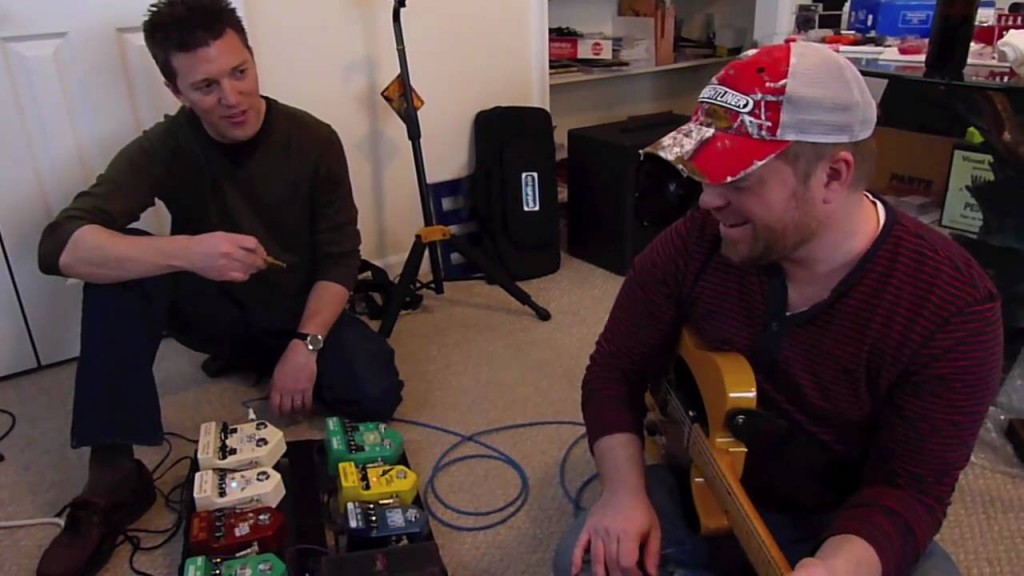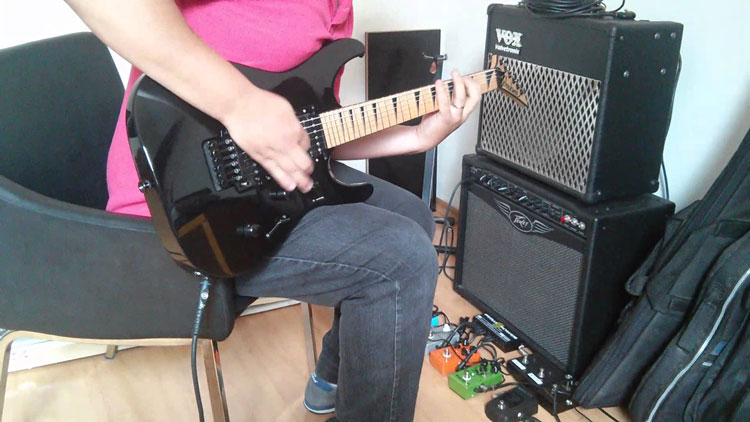
Delays At Their Best: 11 Coolest Tricks For Your Guitar
Delay pedals belong in the most desired pedals in the world and rightfully so. These pedals are not only dab hand in creating a wide range of effects, but also specialized in adding a 3D effect to the original sound. However a top notch delay pedal won’t do you any good if you do not have any idea about how to put it in good use. But the good news is you can do an in-depth research to begin with and then go with your instinct or gut-feeling once you reach that level to do so. A few handy pedal tips and tricks can take you a long way when the delay is concerned.
1. Toy with Time, Repeat and Level
Before experimenting with them, you need to know how they work in a delay pedal. Well, the option or button ‘time’ works as a gap between the main sound and the repetitions. To do it, all you need to do is to use the knob that has written ‘time’ on it and keep adjusting it as long as you don’t get what you need. There are usually four ranges of time in a standard delay pedal starting from up to fifty milliseconds, from fifty one to a couple of hundred milliseconds, from two hundred and one to eight hundred milliseconds and from eight hundred and one to thirty two hundred milliseconds. Feedback or repeat is the one that generates the repeats of the original sound. The number of repeats depends upon the setting you use. If you max up the setting you can get recurring repeats. Put the level option into better use by increasing and decreasing the volume of the repeats.
2. Place the Signal Chain
Using the delay pedal mixing that up with a number of different stompboxes could be proved tricky unless the signal chain is smartly placed. For example, setting up the distortion pedal first and then placing the delay pedal would be a great move rather than the other way around. As the distorted one is counted as the one that has the most solid impact on the original tone, the placement should be in the already mentioned order. Try to position the delay pedal at the last segment of the chain so that it could perform the way it should and reach its full potential.
3. Thicken the Sound
Thickening the sound is one of the most coveted features of a delay pedal. But to get the desired effect you will have to know how to mix and match. Use the doubling option to thicken the sound. This way a subtle delay would be added to the original sound just like a cloak. Set the time option at around fifty to one hundred millisecond along with sky-rocketing the level to get an impression of a tone that sounds like a couple of guitars are in action.
4. Entertain Yourself with Echo and Reverb
Well, to be more precise on this occasion, with slapjack echo and reverb, you can open a door of enormous possibilities when it comes to the right kind of use of your delay pedal. Slapjack echo is kind of like tape slap that works using a short and singular repetition of the original sound. A delay pedal is really good in producing a faux reverb effect if the setting is right. To get this effect, you have to tweak the slapjack one a little. For example, increasing the slapjack time setting which ideally is in between eighty and a hundred and forty milliseconds, to at least a hundred to a couple of hundred ms and increase the slapjack repeat setting up to five keeping the level unchanged, will give you a great reverb effect.
5. Tweaking the Tempo
This is a very basic thing for a guitar player like you to understand that the role of picking the right type of tempo is never a task of minor importance. It is true that while playing the shorter versions of delay it might not be noticed. However, when you are picking a longer delay time, this step is absolutely vital for you to take up with utmost importance. Nowadays, many pedals come along with an option that is called tap-tempo delay. If you own one of those your tempo job will be much easier to do as you can hit he footswitch while playing the delay on time. Not having such a option won’t make it very hard as well. Just google how to do that with a regular pedal and voila! You are on!
6. Do the Dotted Eighths
Dotted eight rhythmic feedback or repeats are great to create an false impression or effect that you are playing at a much faster speed than you actually are and that too with hitting more notes than you really are playing at that time. This effect has been taken to a new level of popularity when guitar greats like David Gilmour and Eddie Van Halen used it in their popular musical numbers.
7. Hurry to Harmonize
You can simply use your delay pedal as a harmonizer if you know how to do that. Brands like Iron Maidens are quite famous for using pedals to create harmony. However, when you follow their lead, make sure you are using a part that is pre-composed because this works better while using in already composed pieces than the ones that have been improvised.
8. Initiate Some Independent Melodies
Taking a few chances here and there and being a bit of adventurous are two of the most beautiful aspects of being a musician. It is true that not all the time these risks would pay off but whenever they do, even if they do it in once in the blue moon, they will be really rewarding. So, don’t ever be afraid of trying new things while playing music or using effects to beautify them. Speaking of adventures, using the harmonization tactics and playing that in rounds or canons can give you some independent melodies for sure. The trick is to use your delay effect instead of the voice that is supposed to follow the melody from the very beginning of it.
9. Layer It up
The illusion of multi-tracking at the same time or adding layer after layer of the original sound gives your playing a little extra. Many prolific musicians use this as one of the most vital parts of their composition or performance all the time. Especially when they are performing live, they love to do it even more. Some guitar pedals comes along with the looping option. Some of the looping pedals can be found separately to be purchased in the market. Just keep one thing in mind once you are ready to record your loop that the points when you start and end the recording are the most important points. Make sure you push the record button on the very first beat and end it on the same beat as well once the entire piece is played and recorded. This is how you avoid the looping sounds intercepting and overlapping each other. And be extra careful about setting the time as even the milliseconds of unwanted delay can make the loop entirely useless.
10. Make the Maths Easier
There are some basic theories and technical terms of music that is quite necessary to produce or perform great pieces of work. However, we often tend to neglect those due their comparatively complex look and rely entirely on our ears and music sense. Well, don’t get me wrong, of course having musical ear and sense is a must for a true musician and so are the basics. So, technical stuffs like figuring out the ms from the bps also known as beats per minute can come absolutely handy when you are trying to get the best delays and effects. When it comes down to playing music, counting beats per seconds would be easier than to do that in minutes as music changes so fast. For example, splitting a minute or sixty seconds into shorter units such as five seconds and then multiplying that by twelve to have the calculation of an entire minute can make the playing very easy and effective.
11. Be Brave, Be Creative
The best thing about clichés like ‘fortune favors the brave ‘, is their honesty and accuracy. Even in the matter of putting your delay into its best actions is not any different to that. There is no limit of creativity. The basics can be learned for sure but what you are going to do with that is up to you. Whether you would like to keep tinkering the basics or you would like to take yourself to a new level as a musician and a guitarist is also depends on your choice to be brave enough to try new things or not.
It does not matter which effects you are using as long as you are courageous enough to keep experimenting and growing. Don’t keep yourself confined or limited to the ‘inside the box’ things only. Think outside it and be ready to surprise everyone including yourself.
Click here to get information about best reverb pedal

